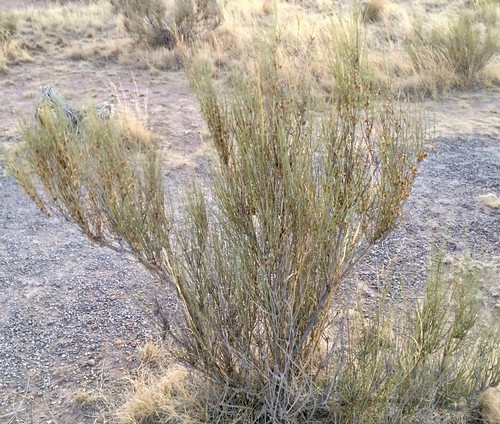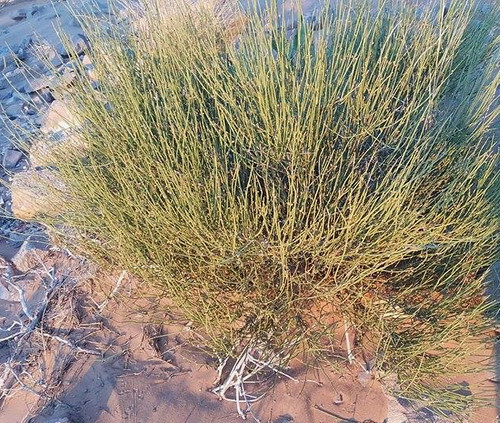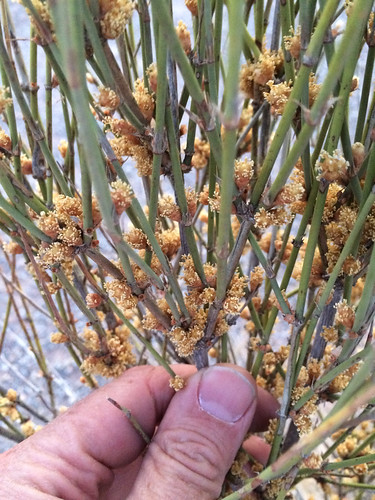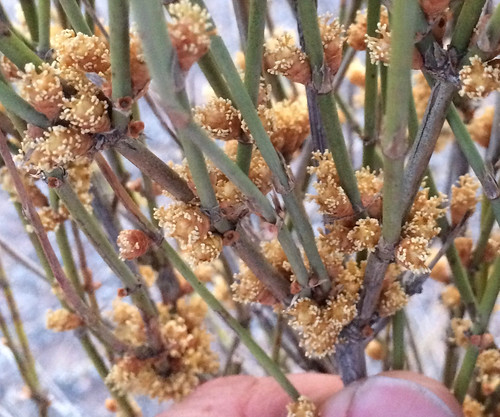Abundance: common
What: leaves, stems, flowers
How: tea (tisane)
Where: arid land, deserts
When: spring
Nutritional Value: stimulants ephedrine and pseudoephedrine
Dangers: too much can lead to heart issues
Medicinal Summary: stimulant
Ephadra growing up through a cracked rock near Marfa, TX.

Another Marfa, TX ephedra thriving unprotected in full sun.


In March/April in West Texas the ephedra produces tan/gold flower cones at the stem joints.

Closeup of ephedra flower cones.

Texas distribution, attributed to U. S. Department of Agriculture. The marked counties are guidelines only. Plants may appear in other counties, especially if used in landscaping.
North American distribution, attributed to U. S. Department of Agriculture.
If you've been anywhere in West Texas you've seen the bundle of sticks that is the ephedra plant growing up out of the sand and gravel. It seems to prefer full sun over shade, with physical adaptions to withstand the harsh climate. It lacks traditional leaves but relies on photosynthesis occurring in its green, jointed stems. This is a perennial bush whose older, lowers sections will be gray and woody. In the spring there will be clusters of small, gold-brown flowers that turn into small "pine cone" like seedheads over the spring/early summer.
The younger, aerial parts of the plant have a long history of being used as a stimulant. Since it doesn't contain caffeine it was considered okay for use by the Church of Later Day Saints, giving it the name "Mormon tea". Note, the preferred species for Mormon tea is Ephedra nevadensis because it lacks the ephedrine found in other members of this genus.
Ephedrine is is a bronchodilator which helps with asthma and other breathing issues. It dries runny sinuses associated with colds and allergies. It also has stimulant properties. The most common form of taking this plant is as a tea aka tisane made from one teaspoon of the dried, crushed plant in one cup hot water, maximum two cups per day.



